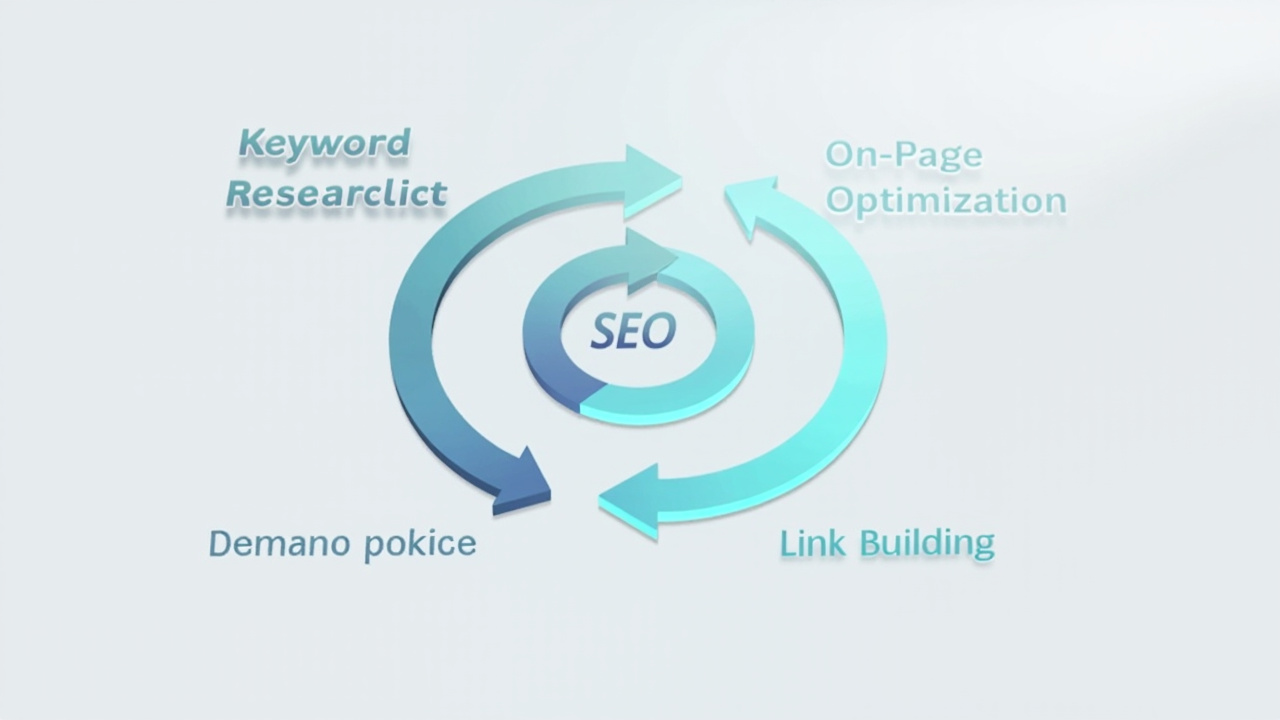In an era where digital presence defines business success, mastering Search Engine Optimization (SEO) has become more critical than ever. As companies strive to make their mark online, the competition for visibility reaches new heights. But what exactly makes SEO such a pivotal aspect of digital strategy? And how can businesses harness its power to outshine competitors?
For many, SEO remains a mysterious and ever-changing landscape. Search engines like Google continuously update their algorithms, leaving marketers in a constant state of adaptation. Navigating this complex terrain requires not only a deep understanding of SEO fundamentals but also the latest tools and techniques to stay ahead.
This blog post aims to demystify SEO by exploring its core principles, the challenges businesses face, and the innovative solutions available today. We will delve into practical strategies, supported by real-world examples, to help you optimize your digital presence effectively. Along the way, we’ll introduce GenQE, an AI-powered tool that, while primarily for software testing, exemplifies the type of cutting-edge technology that can support your broader digital strategy.
Understanding the Basics of SEO

SEO Defined: What It Is and Why It Matters
Search Engine Optimization (SEO) is the practice of enhancing your website to increase its visibility on search engines like Google. The higher your site ranks, the more likely you’ll attract potential customers. But SEO is more than just ranking; it’s about creating a seamless user experience that keeps visitors engaged.
Key Elements of SEO
To master SEO, one must understand its core components, which include keyword research, on-page optimization, and link building. Each plays a crucial role in determining how search engines perceive and rank your website.
Keyword Research: The Foundation of SEO
Effective SEO begins with identifying the right keywords terms your target audience uses when searching for products or services. This involves analyzing search volume, competition, and relevancy to create a strategic list of keywords that will guide your content creation. For instance, a local bakery might focus on keywords like “best cupcakes in [city]” or “custom birthday cakes [city]”. By targeting location-specific terms, they can attract nearby customers who are more likely to convert.
On-Page Optimization: Crafting Content That Resonates
On-page SEO involves optimizing individual web pages to rank higher and earn more relevant traffic. This includes using keywords strategically, improving page load speed, and ensuring mobile-friendliness. Content must be valuable and engaging, as search engines prioritize quality over quantity. Consider a blog post that not only answers common customer questions but also includes engaging visuals and interactive elements to keep users on the page longer.
Link Building: Establishing Authority and Trust
Links from reputable sites signal to search engines that your content is credible and worth referencing. Building a strong link profile involves earning backlinks through high-quality content, outreach, and partnerships. For example, collaborating with industry influencers or guest blogging on well-regarded sites can significantly boost your site’s authority.
“SEO is not about gaming the system. It’s about creating content that your audience finds valuable and relevant.”
The Evolution of SEO: Trends and Changes

A Brief History of SEO
SEO has evolved significantly since its inception in the 1990s. Initially focused on keyword stuffing and link spamming, modern SEO now emphasizes user experience, relevance, and quality content. This shift aligns with search engines’ goals to deliver the best possible results to users. In the early days, businesses could manipulate search results with tactics like hidden text and excessive backlinks. Today’s algorithms are far more sophisticated, focusing on the intent behind searches and the overall user experience.
Key Trends Shaping SEO Today
Several trends are influencing the SEO landscape, including voice search, mobile-first indexing, and artificial intelligence (AI). Understanding these trends is crucial for businesses aiming to maintain a competitive edge.
Voice Search: The Rise of Conversational Queries
With the increasing use of voice-activated devices like Amazon Alexa and Google Assistant, voice search is reshaping SEO strategies. Optimizing for natural language queries requires a focus on long-tail keywords and conversational content. For example, a restaurant might optimize for queries like “where can I find vegan pizza nearby” rather than just “vegan pizza”. The conversational nature of voice search demands a more intuitive and user-focused approach to keyword strategy.
Mobile-First Indexing: Prioritizing Mobile Experience
As mobile usage surpasses desktop, Google has shifted to mobile-first indexing, meaning it primarily uses the mobile version of content for ranking. Ensuring your site is mobile-friendly is no longer optional but essential. This requires responsive design, fast loading times, and easy navigation on mobile devices. Retailers, for instance, need to ensure their mobile sites offer seamless browsing and checkout experiences to prevent potential sales losses.
AI and Machine Learning: Enhancing SEO Strategies
AI technologies, such as Google’s RankBrain, are transforming how search results are determined. These systems analyze user behavior to deliver more personalized results, making it vital to focus on user intent and engagement. AI can help identify patterns in user searches and behaviors, providing insights that inform more effective SEO strategies. Integrating AI-driven solutions like GenQE, which optimizes various processes through machine learning, can offer businesses a competitive edge in refining their digital strategies.
“In a digital world, staying ahead means staying informed about the latest SEO trends and adapting accordingly.”
Overcoming Common SEO Challenges

Identifying and Addressing SEO Obstacles
Despite its importance, SEO is not without challenges. From algorithm updates to technical issues, businesses must navigate various hurdles to achieve optimal results.
Navigating Algorithm Updates
Search engines frequently update their algorithms to improve user experience, but these changes can disrupt rankings. Staying informed and adaptable is key to mitigating the impact of these updates. For example, Google’s core updates can result in significant shifts in search rankings, often without immediate clarity on the cause. Businesses must regularly audit their SEO strategies and be prepared to pivot based on new algorithmic priorities.
Technical SEO: Ensuring Your Site is Search-Friendly
Technical SEO involves optimizing your website’s infrastructure to facilitate search engine crawling and indexing. This includes improving site speed, fixing broken links, and ensuring secure connections with HTTPS. A well-optimized site not only enhances user experience but also sends positive signals to search engines. Retail websites, for example, benefit immensely from fast-loading pages and secure connections, as these factors contribute to both SEO and customer trust.
Content Quality: Meeting User Expectations
Search engines prioritize high-quality content that satisfies user intent. Creating valuable, informative, and engaging content is crucial for maintaining and improving rankings. This means not only focusing on keywords but also providing comprehensive answers and insights that meet user needs. Businesses should regularly update content to reflect the latest information and trends, ensuring ongoing relevance and engagement.
Competing with Established Brands
In competitive markets, smaller businesses often struggle to compete with established brands that dominate search results. Focusing on niche keywords and providing unique value can help level the playing field. For instance, a local coffee shop might target keywords related to specialty brews or community events, differentiating itself from larger chains by emphasizing local and personalized experiences.
“SEO success requires a proactive approach, addressing challenges head-on with strategic solutions.”
Leveraging Advanced Tools and Technologies

Enhancing SEO with Innovative Solutions
In the digital age, technology plays a vital role in executing effective SEO strategies. Advanced tools and platforms can streamline processes, enhance accuracy, and improve results.
The Role of AI in SEO
AI technologies are revolutionizing SEO by providing insights and automating tasks that were once manual and time-consuming. From content creation to keyword analysis, AI offers numerous benefits. For instance, AI tools can analyze user behavior to suggest content improvements or identify profitable keywords that might not be immediately obvious through traditional methods.
AI-Powered SEO Tools: Maximizing Efficiency
AI-driven tools can analyze vast amounts of data to identify trends and opportunities, offering recommendations that inform strategic decisions. These tools enable marketers to focus on high-impact areas. For example, tools like SEMrush and Ahrefs use AI to provide comprehensive insights into keyword performance, backlink profiles, and competitive analysis.
Case Study: The GenQE Approach
While GenQE is primarily a software testing platform, its AI capabilities demonstrate how advanced technology can optimize various processes. By automating test case generation and execution, GenQE enhances efficiency and accuracy, a principle that can be applied to SEO tools. Imagine applying similar AI-driven methodologies to SEO, where content optimization and strategy adjustments are continuously refined based on real-time data insights.
“Harnessing the power of AI can transform your SEO strategy, making it more efficient and effective.”
Implementing an Effective SEO Strategy

Crafting a Comprehensive SEO Plan
Developing a successful SEO strategy involves a structured approach that aligns with your business goals and target audience.
Steps to Building a Robust SEO Strategy
A holistic SEO strategy considers various elements, from keyword research to performance tracking. Each step should be tailored to your specific needs and objectives.
Defining Your Goals and Objectives
Begin by identifying what you aim to achieve with SEO, whether it’s increasing website traffic, improving conversion rates, or enhancing brand visibility. Clear objectives provide direction and allow for measurable outcomes. A retail business might focus on boosting product page visibility, while a blog could aim for greater engagement through informative articles.
Conducting a Thorough SEO Audit
An SEO audit assesses your current performance, identifying strengths and weaknesses. This provides a foundation for improvement and informs your strategic direction. Key areas to examine include site architecture, content quality, backlink health, and technical SEO factors like page speed.
Creating High-Quality, Engaging Content
Content is the backbone of SEO. Develop content that addresses your audience’s needs and encourages interaction, ensuring it is optimized for search engines. This involves not only using the right keywords but also creating compelling narratives that resonate with readers. Engaging content is more likely to be shared, linked to, and rank well in search results.
Monitoring and Adjusting Your Strategy
SEO is an ongoing process that requires regular monitoring and adjustments. Use analytics to track performance and refine your approach based on data-driven insights. Platforms like Google Analytics and Search Console offer valuable data on traffic sources, user behavior, and keyword performance, enabling continuous optimization.
“A well-executed SEO strategy is a dynamic process, evolving with your business and the digital landscape.”
Measuring SEO Success: Metrics and Analysis

Evaluating the Impact of Your SEO Efforts
To determine the effectiveness of your SEO strategy, it’s essential to measure and analyze key performance indicators (KPIs).
Key Metrics to Track
Metrics provide valuable insights into your SEO performance, helping you understand what works and what needs improvement.
Organic Traffic: Measuring Visitor Growth
Organic traffic measures the number of visitors arriving at your site through search engines. An increase in organic traffic indicates improved visibility and engagement. Tracking organic traffic over time helps identify trends and the impact of specific SEO changes or campaigns.
Keyword Rankings: Tracking Position Changes
Monitoring keyword rankings helps you assess how well your content is performing in search results. Aim for consistent improvement over time. Tools like Moz and Google Search Console provide insights into keyword positions and fluctuations, helping you adjust your strategy as needed.
Conversion Rates: Assessing Business Impact
Ultimately, SEO should contribute to your business goals. Measuring conversion rates such as sales, sign-ups, or inquiries tracks the tangible impact of your efforts. Conversion rate optimization (CRO) should be integrated with SEO strategies to maximize the return on investment.
Bounce Rate and Dwell Time: Understanding User Experience
These metrics provide insights into user engagement. A high bounce rate or low dwell time may indicate issues with content relevance or site usability. Improving these metrics often involves enhancing content quality, improving page load speeds, and ensuring intuitive site navigation.
“Measuring success is about more than just numbers; it’s about understanding the story behind the data.”
Conclusion: Embracing the Future of SEO

The Path Forward in the Digital Landscape
As we navigate the complexities of SEO, it’s clear that staying informed and adaptable is paramount. By understanding the evolving trends, overcoming challenges, and leveraging advanced tools, businesses can enhance their digital presence and achieve lasting success.
Incorporating innovative technologies like AI, exemplified by platforms like GenQE, offers a glimpse into the future of digital strategies. While GenQE focuses on software testing, its principles of efficiency and accuracy are universal, reminding us of the potential within AI-powered solutions.
For those ready to take their SEO efforts to the next level, exploring these tools and strategies is an opportunity to drive growth and innovation in an ever-changing digital world.
“Success in SEO is a journey of continuous learning and adaptation, driven by insights and innovation.”
For businesses seeking to enhance their digital strategy, considering tools like GenQE alongside your SEO efforts can yield remarkable results. Explore how cutting-edge technology can transform your approach and set you on the path to success.
Discover More Innovative Solutions
Want to learn more about the tools and technologies discussed in this article? Explore how these innovations can be tailored to your specific needs and workflow requirements.
Our team of experts is available to answer your questions and provide personalized insights into how modern solutions like GenQE can address your specific challenges.
If the link above does not work, please visit: https://calendly.com/dm-csimplifyit/30min?month=2025-05